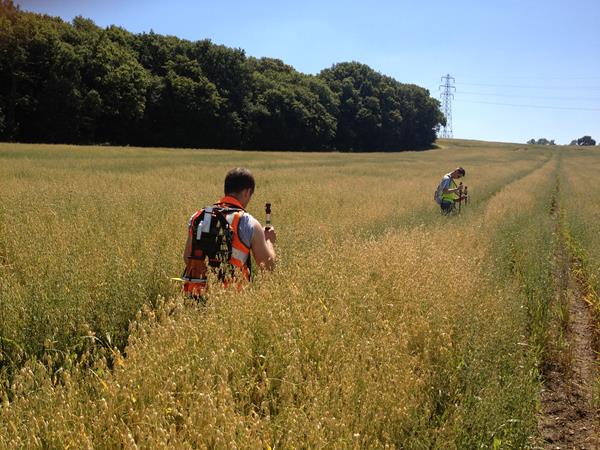CLOSE INTERVAL POTENTIAL SURVEY (CIPS)
CIPS, sometimes referred to as CIS (Close Interval Survey), is an above ground, non-intrusive survey, which is used to accurately determine the effectiveness of a cathodic protection system along the entire buried or immersed pipeline route.
The effectiveness of cathodic protection on buried pipelines is generally assessed by reference to the pipe-to-soil potential measurements since all national Standards refer to a potential criterion of one sort or another.
The CIPS technique can be employed for both buried (onshore) and immersed (offshore) pipelines.
CIPS - Onshore Pipelines
Pipe-to-soil potentials measured at test points (typically installed at 1 to 2 kilometre intervals along the pipeline route) do not accurately reflect the pipe-to-soil potentials in between test points.
To overcome this, a close interval potential survey (CIPS) is undertaken, with pipe-to-soil potentials are measured at nominal 2 metre intervals.
Pipe-to-soil potentials measured when the cathodic protection current is flowing are influenced by the actual cathodic protection current. This causes a measurement error that has become known as an IR error (from Ohm’s Law: V = I x R volts).
To overcome this error the sources of impressed current cathodic protection (where applicable) to the pipeline are synchronously interrupted and the pipe-to-soil measurement taken after the currents have stopped flowing but before the pipe depolarises.
CIPS - Marine / Offshore Pipelines
Offshore pipelines are typically sacrificial anode systems, for which interruption cannot be performed to measure the IR Free (“Off”) Potentials. The international Standards give potential criterion based on “On” (i.e. uninterrupted) Potenials.
The premise of the measurement is much the same as Onshore, with a cable reel mounted to the rear of a survey vessel, providing a permanent connection to the pipeline onshore, and the data logging equipment on board. Reference electrodes are attached to the Sonar Tow Fish, and connected to the data logger on board.
CIPS (Close Interval Potential Survey) Onshore
Combined CIPS & DCVG Survey
CIPS (Close Interval Potential Survey) Offshore



